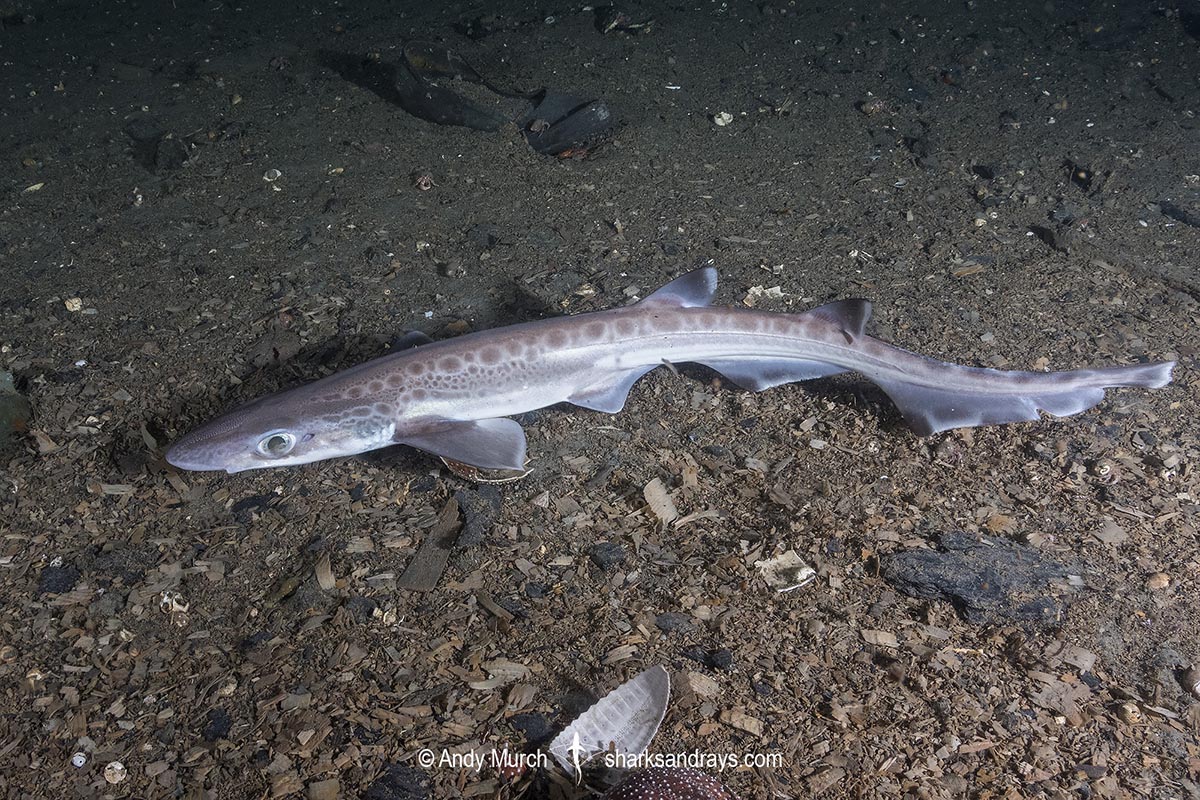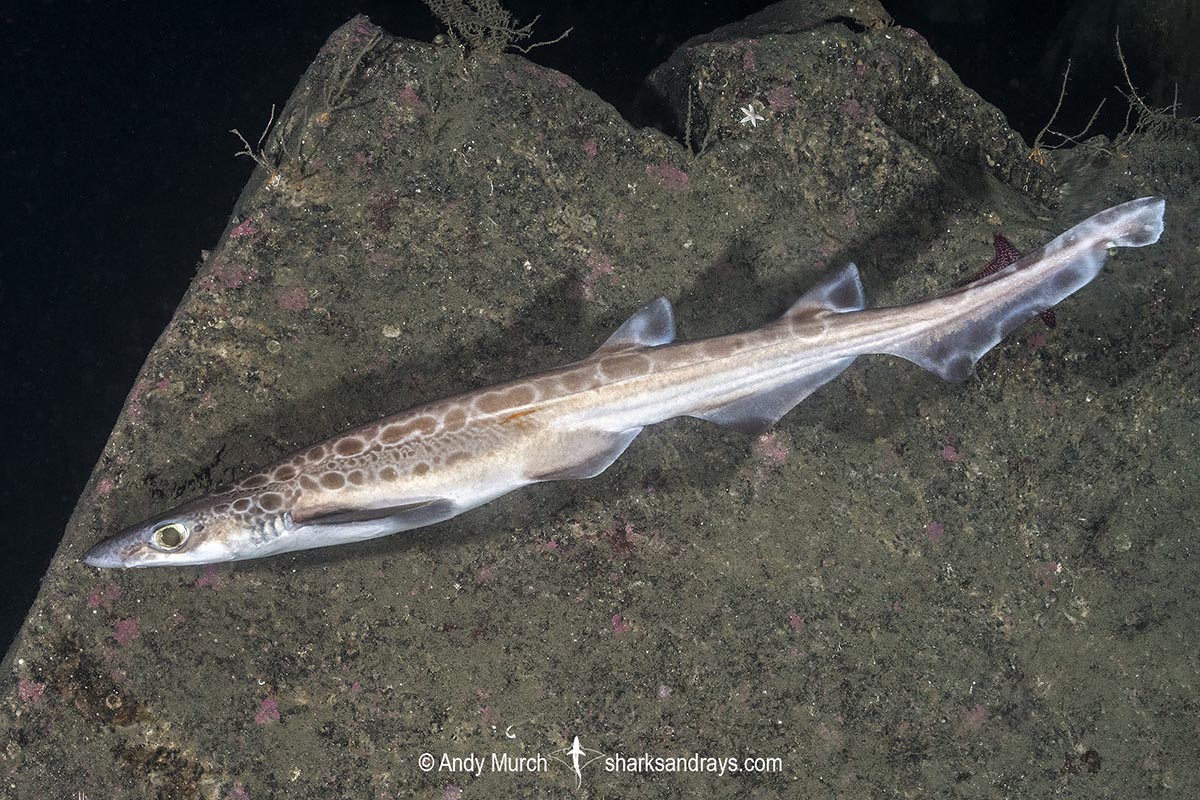Common names
Blackmouth Catshark.
Binomial
Galeus melastomus.
Synonyms
Galeus melanostomus, Pristiurus melanostomus, Pristiurus melastomus, Pristiurus souverbiei, Scyllium artedi, Scyllium artedii, Scyllium melanostomum, Squalus annulatus, Squalus delarochianus, Squalus prionurus.
Identification
Slender body. Snout pointed. First dorsal origin approximately level with pelvic fin insertion. First and second dorsal fins of equal size, with a pointed apexes. Pectoral fins large. Anal fin very long; extending from level of first dorsal insertion to origin of caudal fin. Caudal fin has a distinct row of enlarged dermal denticles along upper margin. Dorsal coloration predominantly brown with a vivid pattern of large and small brown circles, edged in white. Circles form rows extending from head to tip of tail. Larger animals have more intricate patterns with a greater amount of circles within each row. Fins dark blueish-grey with vague pale circles and pale margins.
Size
Galeus melastomus is one of the largest sawtail catsharks. Maximum length 90cm (Compagno et al. 2005). This record is questionable since other researchers list vastly smaller maximum sizes of 62-67cm (Rey et al. 2002, Costa et al. 2005). Size at birth unknown.

Conservation Status
LEAST CONCERN
Although the Blackmouth Catshark is taken as bycatch by demersal trawls and longlines throughout large areas of its geographic range, it is generally discarded. In European waters, it remains one of the most abundant shark species. West African populations are of more concern due to largely unregulated fishing, but over all the population seems to be stable.

Habitat
Rocky, sandy or muddy substrates on outer continental shelf. Usually remains on bottom or close to it. Mostly found between 200-500m. Listed as occurring between 55-1000m, but regularly encountered in certain Norwegian fiords between 25-40m even when no chum is used.
Distribution
The blackmouth Catsharks is present in the Northeast Atlantic Ocean and Mediterranean Sea. From the Faroe Islands and Southern Norway southward to the Azores and Senegal.
Reproduction
An oviparous species, laying up to 13 egg cases. Egg production occurs year round. Hatching occurs mainly in spring and summer.
Diet
Hunts for bottom dwelling invertebrates (shrimps, cephalopods, etc) and small bony fishes including lanternfishes.
Behavior
Little is known about blackmouth catshark behavior. Forages over substrate in search of food, sometimes seen resting in areas where an abundance of food is available i.e. near fish and scallop farms.
Reaction to divers
Fairly easy to approach when resting on the sea floor. Will bolt if approached to quickly or aggressively.
Diving logistics
Rarely encountered south of Norway. Although normally found in water too deep for recreational diving, in certain Norwegian fiords e.g. Namsen Fiord and Trondheim Fiord, run-off at the surface creates a layer of silty water that significantly lowers the light level in the water below it.
In these areas, blackmouth catsharks and other deepwater species (such as velvetbelly lantern sharks), are found much closer to the surface than elsewhere.
Blackmouth Catsharks can often be seen when exploring certain reefs within these fiords but they are even easier to see and approach when bait is introduced.
Similar species
Atlantic Sawtail Catshark Distinguished by less intricate markings including large blotches and saddles. Limited range from Spain to Northwest Africa, at depths between 330-790m.
African Sawtail Catshark Distinguished by blotchier flank markings and saddles. Range overlap from Morocco to Senegal. Found at depths between 159-720m.






